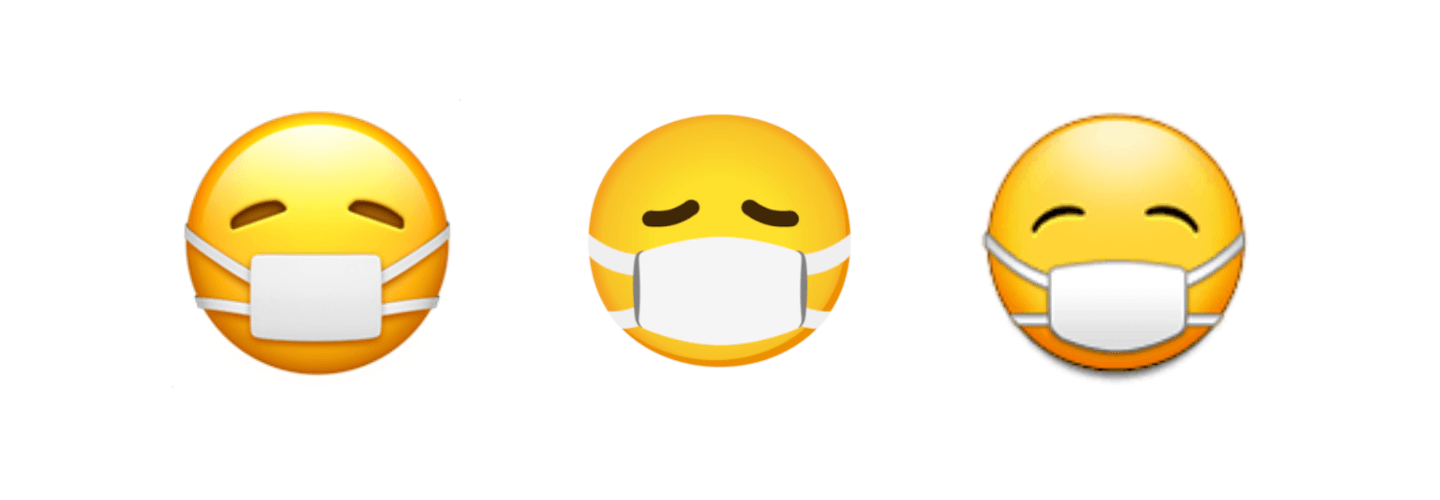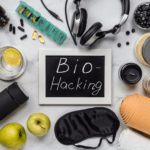Widespread mask wearing in public has become routine, and, in many places, mandated across the US and around the world. While this is not an email on opinions about, or the politics of, mask wearing, I am interested in the ways it potentially impacts our social interactions. How could it not, given that most of the face is covered? Although it is less common that I find myself in any social situation these days, I can easily imagine how interaction has been and will continue to be made more difficult. A recent outing with my family prompted me to look into the interplay between social interaction and mask wearing and thought I’d share some of what I learned.
I’m not going to revisit all the science about mask effectiveness (here is a document that canvasses the subject that we put together a few months back), but in general, surgical and N95 respirator masks greatly reduce the particles the wearer sends into the environment and are more effective than cloth masks. It’s hard to make a blanket statement about the effectiveness of the cloth masks worn by most of the public because it varies by factors like type of fabric, number of fabric layers, thread count, and how water-resistant the material is; it is also affected by wearer behavior such as not covering the nose and mouth, touching one’s face, etc. However, it is generally agreed that cloth masks offer more protection than no masks at all and that their effectiveness increases with the number of people who wear them. For a great interactive graphic illustration of how masks block microscopic particles, see this feature in the New York Times.
Let’s begin by talking about what the word “mask” means. The etymology of “mask” comes most proximally from the European “masquerade” and the modern meaning “to hide and protect the face.” Of course, during the current pandemic, we wear masks for protection. There are other intentions for mask wearing – like worship, healing, initiation, and storytelling—which have been well-documented from recovered artifacts that reach back into Paleolithic history.
But when a face mask is worn for protection, it also veils facial expression. Hiding facial expression via a figurative mask may sometimes be the intention. This case makes me think of the expression “saving face” for which the (proverbial) mask wearing intentionally “hides” expression and thereby imparts emotional protection (rather than physical). But in the literal sense, there is an imposed challenge from sustained mask-wearing. It turns out that we are dependent on facial expressions to effectively communicate with and understand others.
I saw this firsthand when my family and I went out for ice cream. (We actually went out for dinner, but the kids were good and they begged for ice cream, so I caved.) Everyone was in their masks standing in line. I noticed the man in front of us had a hearing aid. Both the man ordering and the woman behind the counter were wearing masks and were having trouble communicating as a result of the mouth covering. Ultimately, he was able to order, but the observation stayed with me. I later read an editorial written by novelist and deaf rights activist Sara Nović, who pointed out that facial expressions and movements of the mouth are critical for understanding American Sign Language (ASL). “[I]n interactions in which deaf people rely on speech-reading and facial cues, masks make communication nearly impossible,” she wrote, which can lead to reactions of impatience or anger from hearing people. Similarly, in a New York Times article, a deaf woman recounted that when she tries to communicate with someone whose mouth is concealed, she must revert to picking up on other visual clues like eyes and eyebrows to communicate, creating an “ever-widening gap” in communication.
Paul Ekman, a famous psychologist whose work focused on faces and emotion, found that humans express seven core emotions (joy, anger, fear, surprise, sadness, contempt, and disgust) through non-verbal cues in common facial expressions. A series of experiments found that both recognizing and making facial expressions to express specific emotions is common across all cultures. In fact, in some situations, non-verbal communication plays a primary role in communication. Masks can interfere with this instinctual process.
To some extent, we all use facial expressions to both communicate with and understand one another. Humans are especially wired to see faces and facial features in the random patterns in our environment. “Pareidolia” is a term for the human tendency to see meaningful images in random patterns, like finding familiar shapes in clouds. This ability probably developed during a time when spotting a face in the underbrush could mean the difference between survival and death. There’s also an evolutionary advantage to understanding whether those around us are angry or afraid by reading their facial expressions. We have a primal need to search out and interpret others’ faces.
The “social smile” is one of the most effective ways of easing social interactions, but only what’s known as a “Duchenne smile,” a whole-face smile that involves crinkling of the eyes, is detectable behind a mask. Even negative emotions like dismay are often conveyed in part through the mouth. Masks also interfere with the recognition of what are called microexpressions. These are split-second facial reactions that may be indicative of hidden emotions. Because the recognition of microexpressions can build rapport and establish trust (or indicate deception), masks can undermine a critical component of interpersonal communication.
Can the science of facial expressions help explain some of the social resistance to wearing protective masks? During the 1918-1920 influenza pandemic, many severe restrictions were enacted in the US, including closing stores, churches, and schools. But most public resistance centered on mask wearing, which was seen as an affront to personal liberty, with some people even going to jail in San Francisco where it was mandated. We’ve seen similar resistance during the current pandemic. The relationship between mask wearing and reasoning for social pushback is surely more nuanced and complex, but there is something about covering the face that seems to induce very strong emotions. Without the non-verbal cues provided by the mouth, we appear to experience an unsettling disorientation.
Vaccine expert Paul Offit has explained that the way to get the virus under control will be a combination of both a vaccine and the hygienic practices, including wearing masks. In short, protective face masks and their hiding of expression will continue to be social fixtures. (You can hear more about the COVID-19 vaccine landscape in my conversation with Paul.) But vaccine or not, it looks like we may have to live with a bit of hindered communication and seek alternative ways to express and recognize emotion.
– Peter






Now we need N95 respirator masks that are transparent, at least over the mouth. I bought a transparent mask on Etsy, and created a DIY filter to fit inside the chin. But I couldn’t keep the filter in. I have a window mask, but I question its filtering ability. I augmented a face shield into a hood, but again, no filter.
What do you think the overall incidence of respiratory spread is with SARs 2? I certainly think we should err of the side of caution but I would think it more likely hand to mouth (mucous membrane) spread?
It’s good that someone is discussing some of the ramifications of mask wearing as it has almost become taboo to do so. Or, if you question it you are seen as a crazy alt-right supporter.
What nobody seems to want to really want to delve into are the following questions:
1- What is the overall effect of mask wearing on stopping the spread?
Masks block particles we can all accept that. But does that translate into a reduction in the spread of the virus in any given area? Nobody has answered that question and if you look at graphs where mask mandates were implemented, you see that the positive cases remain the same or even increase. How are we measuring mask effectiveness?
2- What is the overall cost to wearing masks?
I don’t just mean financially. Peter mentioned unsettling emotions and a disorientation for some people in response to mask wearing. What does that do to people long term. What do you do with the build up of resentment? Will people go out less because of them? What does that do to our social lives, something unbelievably important in regulating our emotions. Will it impact local economies? If so what will the loss of income, businesses and jobs do to people.
A mask is not just a piece of cloth, and if you can’t show a person proof that they have impacted the numbers in any given region then why should that person listen?
Re: your first question: actually, when adjusted for other local changes (since mask mandates often travel along with other restrictions and states vary in their population characteristics, etc) and with the amount of local spread at the time of initiation, studies even within the US (to say nothing of international comparisons with Singapore, South Korea, or other countries with well-established masking, which comparisons are much more confounded) show that mask mandates ARE correlated with reduced transmission:
https://www.healthaffairs.org/doi/full/10.1377/hlthaff.2020.00818
Here is a comparable study looking at transmission within Germany:
https://ftp.iza.org/dp13319.pdf
See also this influential systematic review:
https://www.thelancet.com/journals/lancet/article/PIIS0140-6736(20)31142-9/fulltext
A problem with mask studies for COVID-19 is that they tend not to age well; relationships that appear valid for one time period cease to apply in another. The Health Affairs study mentions in its appendix that at the time of the study, the non-mask mandate states had less than 1/5 of the cumulative measured incidence of the mask mandate states, suggesting that they were at very different points on their curves.
The German study looks at Jena, where the mask mandate was followed by 3 weeks with almost no new measured infections. This looks impressive, although at the time, new measured infections were falling sharply across the country and perhaps Jena was just a few weeks ahead of other areas; Germany’s cumulative positive test chart has a similar shape, shifted by a few weeks. Jena’s cumulative positive test results have nearly quadrupled since the end point of the study, mostly in the last month https://gesundheit.jena.de/en/coronavirus.
At the moment there may also be publication bias; a Danish RCT of mask wearing for COVID-19 has gone unpublished.
Yeah but then look at the newest and biggest study out of Denmark which shows there’s no statistical significance between wearing masks or not wearing them.
And again, some countries/areas have no mask mandates and have comparable infection rates to other ares in their vicinity – meaning the population and geography are the same with the virus coming through at the same time. There should be a difference and there isn’t.
I can post just as many links as you can that show they don’t do anything.
Here is another such study:
https://www.sciencedirect.com/science/article/pii/S0304407620303468
One of the key reasons I read Peters newsletter is his ability to breakdown science and assess or explore the validity of the claims made about many topics. However, it was Paul Ekman who got me into science initially and seeing one role model following your other role models work is exciting!
Many people don’t realise that Ekman actually sought out to disprove Darwin, believing that facial expressions were learnt and not innate. Not only being open to being wrong but embracing the evidence so strongly (despite most academics at the time saying emotions were learnt) is a testament to Ekman as a true scientist.
Dr. Attia, you might want to look at PTSD and how it impacts the ability to wear a mask. Flashbacks – emotional or otherwise – to times when a person was forcibly silenced by covering their mouth during rape, molestation, etc. is quite real.
Some rape survivors have already spoken out about their flashbacks while wearing a mask – see https://news.yahoo.com/rape-survivor-campaigns-greater-understanding-face-mask-exemptions-172653283.html as an example. Those molested as children may experience emotional flashbacks, even if they have blocked out the specific traumatic incident. We know the numbers already for how many are molested as children – 1 in 4 for girls, 1 in 6 for boys.
Mask mandates and the social pressure around wearing them only add to the shame and despair that victims of childhood abuse already suffer from.
Peter, Did you do a literature search prior to writing your post? We have dozens of studies over many decades which showed ZERO efficacy of mask wearing in reducing the spread of influenza and influenza-like respiratory diseases.
Recommending masks when all available evidence shows they are ineffective is the essence of anti-science.
Hey Mark. I cannot attest to the studies you suggest are out there but down here in Australia in the state of Victoria we managed to completely eradicate covid and it was once mandatory mask wearing in public was implemented that the daily numbers decreased significantly.
Correlation does not equal causation
Review paper on masks from CDC website less than a year ago: https://wwwnc.cdc.gov/eid/article/26/5/19-0994_article?fbclid=IwAR2V1hPqN0WKb2kXVExP_1UE9ARvru6mtPZvZN0w1jx0S3l3fXLhxMP_bXs
All evidence points to zero efficacy.
Your note on the affect of masking on communication, though sort of obvious, is still elucidating. All these degenerative things, as one adds them, are disturbing. I have lived with my wife for over 50 years, and although we had gotten along essentially well, the advent of, eg, progressive loss of hearing, despite bilateral hearing aids, has made communication more and more difficult. Physical problems, like diabetes and osteoarthritis, and the quintillion medications one must take daily, make social interactions more and more of a problem. And now Masks! I agree with you. I don’t hear them, nor they me.